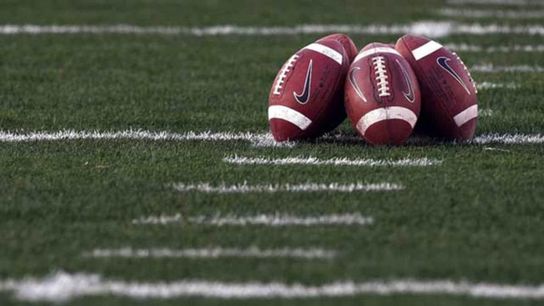The NCAA Rules Committee on Friday announced its plan to stop incentivizing teams for faking injuries, and their plan is not the AFCA's.
At last month's annual convention, a committee of coaches championed the idea of forcing any player who requires a game stoppage to leave the field to sit out the remainder of the drive. Quarterbacks and "green dot" defensive players would be exempt from the rule, but everyone else would be forced to play under the adage of, If you're acting hurt, you'd better be hurt.
Turns out, that solution was too drastic for the Rules Committee.
On Friday, the Committee recommended a rule that would charge a team with a timeout if a player required medical attention -- and this part is crucial -- after the ball has been spotted for play. The thinking is that any player genuinely injured would seek medical attention immediately after the play and not wait for the ball to be spotted.
"The committee identified the time period after the ball has been spotted as the most egregious violations of the injury timeout rule and is addressing the issue this way," said Rules Committee co-chair Kirby Smart. "Having a set time frame of when the game is stopped for an injured player should hopefully help curtail the strategy of having players fake injuries."
The thinking on the AFCA proposal, National Coordinator of Officials Steve Shaw said, was that the incentive structure was too strong. Beyond conditioning healthy players to stop faking injuries to gain an advantage, the proposal would also incentivize actually injured players to keep playing. The fear of putting player safety at risk led the committee to find an alternate solution.
If a team is out of timeouts when a player goes down after the spotting of the ball, they would be hit with a 5-yard penalty.
On the Mike Ehrmantraut Measure Scale, this proposal strikes me as a Three Quarters Measure. Defenses can still manufacture a timeout after giving up a long gain by having a defensive lineman hit the turf immediately after the play ends, and now offenses are incentivized to keep injured defenders on the field by going up-tempo and forcing officials to spot the ball as quickly as possible.
Hopefully the rule will curtail the practice of faking injuries in 2025. If not, we'll be back in the same place in 2026.
The NCAA Playing Rules Oversight Panel will vote on the proposal April 16.
As always, stay tuned to The Scoop for the latest.
